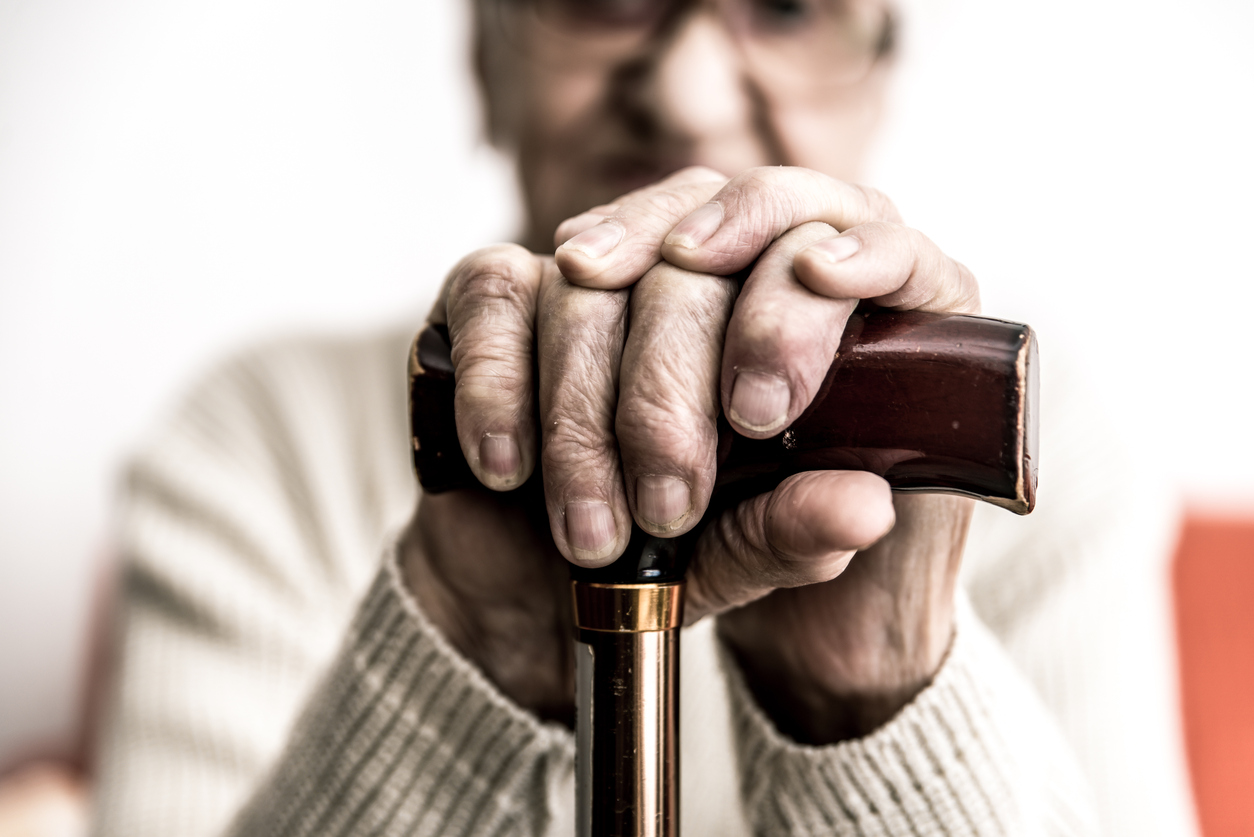A 76-year-old man with past medical history significant for a cerebrovascular accident, pacemaker insertion for sick sinus syndrome and transurethral resection for benign prostatic hyperplasia was rushed to the emergency department.1
The ambient temperature on the day of admission was 36.7°C. His medications included oxybutynin 5 mg tds. He had reported not feeling well and was light-headed.
When he arrived at the hospital car park, he started acting in a confused manner and attempted to get out of the car through the window. A few moments later, while still in the parking lot, he experienced a tonic-clonic seizure lasting only a few seconds.
The initial examination revealed that he was stuporous and responding only to painful stimuli, his skin was warm to the touch and dry, with a rectal temperature of 40°C, blood pressure of 160/88 mm Hg and heart rate 160 beats/min.
Within three hours of admission, the patient’s temperature was decreased to normal values by the use of ice packs, intravenous sodium chloride 0.9% infusions at room temperature (3 L) and bladder irrigations with cold sodium chloride 0.9%.
A review of the patient’s chart revealed that he had been admitted during the previous summer with a similar febrile episode and a rectal temperature of 41.1°C. The patient was also taking oxybutynin at that time. When he was discharged from this admission, he was instructed to refrain from taking oxybutynin and to keep a scheduled appointment with his urologist to discuss the need for continued use of the drug.
During one summer, a 48-year-old man with a history of diabetes mellitus and schizophrenia was twice admitted to hospital because of heat-related illnesses.2 On both occasions, he had been working under the sun in an open car park.
His medications included benzhexol 2 mg twice daily, chlorpromazine 650 mg at bedtime, and zuclopenthixol decanoate intramuscular injection 600 mg every 4 weeks.
The first admission, for heat stroke, was more severe. Upon arrival at hospital, the patient was comatose, with a temperature (measured via ear) of 42.4°C, hot dry skin, blood pressure of 66/27 mm Hg and heart rate 156 beats/min.
He was intubated. Fluid resuscitation and evaporative cooling by sponging with tepid water and fanning were initiated. He had metabolic acidosis, renal impairment, thrombocytopaenia, and rhabdomyolysis. Supportive care was required for 14 days, until recovery.
Heat stroke, an acute, life-threatening emergency, results from an overload or impairment of the body’s normal heat-dissipating mechanisms.3 The elderly (and infants) are most at risk and medications can be implicated.
Early recognition and rapid cooling plus cardiopulmonary support are essential. Antipyretics are contraindicated because they are ineffective in heat stroke and increase the risk of liver dysfunction. Unfortunately, temperature regulation disorders in the elderly are both relatively common and life-threatening, and they often go unrecognised.
One of the most direct health effects arising from global climate change is expected to be increased rates of mortality and morbidity associated with exposure to transient heat waves and high ambient temperatures.4-7 Many studies have shown that the elderly are among the most vulnerable to heat waves, with increases in cardiovascular and respiratory mortality, and hospital admissions for cardiac, respiratory and renal conditions during heat waves.4,6,8 Extreme heat-associated hospitalisations, especially amongst the elderly, have increased in recent decades.5
To illustrate the future impact of climate change, under a scenario of medium population growth, by the 2080s, Beijing is projected to experience 14,400 heat-related deaths per year in elderly individuals, which is a 265% increase compared with the 1980s.9 Modelling the effects of anticipated climate changes on the risks of heat disorder in Japan in the 2030s predicted increasing numbers of people transported by ambulance per day in summer by 63%.10 It is estimated that respiratory admissions alone in New York State due to excessive heat will be two to six times higher in 2080-2099 than in 1991-2004, due to climate change.11
Thermoregulation is largely a function of the temperature-regulating centre in the hypothalamus, which senses the temperature of the blood perfusing the brain and activates peripheral processes to bring core temperature to preset values. The major pathophysiologic mechanism underlying classic heat stroke is impaired heat dissipation because of compromised homeostatic mechanisms.1
The main ways in which the body eliminates heat during thermal stress are through sweat production (if the ambient humidity is below 75%), increased cardiac output to supply blood to the periphery, and redirection of blood flow to the skin (increases heat loss by radiation and conduction). When the environmental temperature is greater than the core body temperature, sweat production is the primary physiological way to lose heat.4 These responses can be diminished in elderly people, particularly in the presence of some drugs.
A range of physiological consequences of ageing contribute to the elderly’s sensitivity to heat. The lower a person’s body weight and total body water, as occurs with ageing, the sooner the loss of even a small amount of body water will cause symptoms and signs of dehydration.7
The inability to increase cardiac output, particularly if suffering cardiac disease, decreased peripheral blood flow and sweating, and reduced thirst sensation and capacity to conserve salt and water (e.g. with impaired renal function) are all important additional risk factors in the elderly.
Other contributing factors may include a reluctance to drink fluids because of concerns about bladder control problems, medical advice to restrict fluids or a lack of understanding of the importance of proper hydration or of perceived vulnerability to the effects of hot weather.13
Heat illness may be viewed as a continuum of illnesses relating to the body’s inability to cope with heat. Signs of heat-related illness in an individual often begin with heat exhaustion, a mild to moderate illness caused by water or salt depletion that results from exposure to high environmental heat or strenuous physical exercise.2,4,12
Affected subjects may experience intense thirst, weakness, nausea, vomiting, dizziness, fainting, headache, and muscle cramps. The temperature is typically normal but can be elevated; it is usually less than 41°C if elevated. Clinical signs and symptoms of dehydration are almost always present in the form of tachycardia, hypotension, and sweating.3,12
If unrecognised and untreated, heat exhaustion may progress to heat stroke. The latter is a medical emergency, with a core body temperature above 40°C, accompanied by hot, dry skin, multiple organ dysfunction and central nervous system abnormalities, such as confusion, delirium, ataxia, convulsions, or coma.
The key point in differentiating heat stroke from heat exhaustion is that central nervous system dysfunction is present in heat stroke but not in heat exhaustion. The prognosis depends on how early the diagnosis is made and how promptly cooling measures and active fluid and electrolyte resuscitation are started.2
Progression to death in an individual with heat stroke can happen rapidly (within hours), and even with prompt medical care, 10-15% of heat stroke cases are fatal; approximately 80% of deaths from heat stroke occur in persons more than 50 years old.2
Heat exposure is also a factor that can contribute to exacerbation of many pre-existing health conditions. In high-income countries, most heat-related deaths are likely to be from cardiovascular or respiratory causes.4 In many situations, however, heat exposure might not be confirmed as the underlying cause of death, and so heat-related illness is under-reported.
Rates of heat-related mortality and morbidity are highest in elderly and chronically ill individuals, particularly those with cardiovascular, respiratory, and renal diseases.2,4 The risk of heat stroke is also increased when patients take drugs that are known to impair thermoregulatory processes, either centrally via the hypothalamus or peripherally.14 These medications include diuretics, antipsychotics, or drugs with anticholinergic properties1-4,7,13-17:
- Anticholinergic drugs (e.g. oxybutynin) or drugs with anticholinergic side effects (e.g. tricyclic antidepressants) can inhibit sweating and reduce heat elimination.
- The set point of the temperature regulation centre in the hypothalamus can be elevated by the antidopaminergic effect of antipsychotics. Some antipsychotics (e.g. phenothiazines) also have significant anticholinergic effects. It should be noted that neuroleptic malignant syndrome (NMS), a rare adverse reaction to antipsychotics, is a separate condition and out of scope in this article. It is characterised by fever, altered mental status, muscle rigidity, and elevated plasma creatine kinase. Heat stroke can be differentiated from NMS by an abrupt onset, the absence of muscle rigidity, a higher core temperature, and a history of physical exercise or exposure to high ambient temperature.2
- Diuretics can reduce body water.
- Beta-blockers inhibit compensatory increases in cardiac output, and reduce peripheral blood supply.
- Inhibition of the renin-angiotensin-system by angiotensin-converting enzyme (ACE) inhibitors or angiotensin II receptor blockers (ARBs) leads to reduced body water, and the drugs can also reduce thirst.
- Selective serotonin reuptake inhibitors (SSRI) can cause hyponatraemia, with a resulting reduction in thirst.18
- Alcohol can cause central nervous system depression, reducing alertness, judgment and perception of heat; and cause diuresis with consequent dehydration.
French studies have examined characteristics of heat-related serious adverse drug reactions (ADRs) in patients older than 70 years during two heat waves.19,20
Drugs more frequently involved in ADRs during heat waves were diuretics, SSRIs, ACE inhibitors/ARBs, proton pump inhibitors and benzodiazepines. The most frequently ADRs were metabolic (dehydration) and neuropsychiatric (confusion, falls, coma). Multivariate analyses showed that patients with hyperthermia or heat stroke were more likely than controls to be taking anticholinergic drugs, antipsychotics, or anxiolytics.21
With the influence of global warming, heat stroke is likely to become more prevalent as heatwaves occur more frequently and intensely. Heat stroke is often complicated by the presence of medications. In fact, global climate change may have a strong impact on the future selection of drugs in elderly patients.17
During a heat wave, special attention should be given to those most at risk, and the importance of preventive measures should be emphasised.2
Education is the most important strategy for the prevention of heat stroke. Pharmacists can ensure older people have a good understanding of how to stay well during hot weather and encourage them to4,13:
- drink small amounts of their preferred nonalcoholic fluids, often, without waiting for thirst.
- preferentially, eat cold foods that have a high fluid content.
- stay cool by using an air conditioner at home or having access to air-conditioned areas, such as shopping centres.
- stay indoors out of the heat during the hottest part of the day and take extra showers if able.
- wear lightweight, loose fitting clothes.
- maintain frequent contact with family, friends or carers.
PROFESSOR GREGORY PETERSON MPS is Deputy Dean (Research), Faculty of Health and Co- Director, Health Services Innovation Tasmania, School of Medicine, University of Tasmania and a community pharmacist.
References
- Adubofour KO, Kajiwara GT, Goldberg CM, et al. Oxybutynin-induced heatstroke in an elderly patient. Ann Pharmacother 1996;30(2):144-7.
- Kwok JS, Chan TY. Recurrent heat-related illnesses during antipsychotic treatment. Ann Pharmacother 2005;39(11):1940-2.
- Waters TA. Heat illness: tips for recognition and treatment. Cleve Clin J Med 2001;68(8):685-7.
- Hajat S, O’Connor M, Kosatsky T. Health effects of hot weather: from awareness of risk factors to effective health protection. Lancet 2010;375(9717):856-63.
- Gronlund CJ, Zanobetti A, Wellenius GA, et al. Vulnerability to renal, heat and respiratory hospitalizations during extreme heat among U.S. elderly. Clim Change 2016;136(3):631-45.
- Astrom DO, Forsberg B, Rocklov J. Heat wave impact on morbidity and mortality in the elderly population: a review of recent studies. Maturitas 2011;69(2):99-105.
- Rikkert MG, Melis RJ, Claassen JA. Heat waves and dehydration in the elderly. BMJ 2009;339:b2663.
- Phung D, Thai PK, Guo YM, et al. Ambient temperature and risk of cardiovascular hospitalization: An updated systematic review and metaanalysis. Sci Total Environ 2016;550:1084-102.
- Li T, Horton RM, Bader DA, et al. Aging will amplify the heat-related mortality risk under a changing climate: projection for the elderly in Beijing, China. Sci Rep 2016;6:28161.
- Kikumoto H, Ooka R, Arima Y. A study of urban thermal environment in Tokyo in summer of the 2030s under influence of global warming. Energy Build 2016;114:54-61.
- Lin S, Hsu WH, Van Zutphen AR, et al. Excessive heat and respiratory hospitalizations in New York State: estimating current and future public health burden related to climate change. Environ Health Perspect 2012;120(11):1571- 7.
- Luber G, McGeehin M. Climate change and extreme heat events. Am J Prev Med 2008;35(5):429-35.
- Westaway K, Frank O, Husband A, et al. Medicines can affect thermoregulation and accentuate the risk of dehydration and heat-related illness during hot weather. J Clin Pharm Ther 2015;40(4):363-67.
- Dao CK, Nowinski SM, Mills EM. The heat is on: Molecular mechanisms of drug-induced hyperthermia. Temperature 2014;1(3):183-91.
- Martinez M, Devenport L, Saussy J, et al. Drug-associated heat stroke. South Med J 2002;95(8):799-802.
- Dharmarajan TS, Bullecer MF, Gorich G. Drug-related hyperthermia. J Am Med Dir Assoc 2001;2(4):160-5.
- Stollberger C, Lutz W, Finsterer J. Heat-related side-effects of neurological and non-neurological medication may increase heatwave fatalities. Eur J Neurol 2009;16(7):879-82.
- Petrykiv S, De Jonge L, Arts M. Hyponatremia associated with selective serotonin-reuptake inhibitors. Eur Psychiatry 2017;41(Supplement):S758.
- Sommet A, Durrieu G, Lapeyre-Mestre M, et al. A comparative study of adverse drug reactions during two heat waves that occurred in France in 2003 and 2006. Pharmacoepidemiol Drug Saf 2012;21(3):285-8.
- Michenot F, Sommet A, Bagheri H, et al. Adverse drug reactions in patients older than 70 years during the heat wave occurred in France in summer 2003: A study from the French PharmacoVigilance Database. Pharmacoepidemiol Drug Saf 2006;15(10):735-40.
- Martin-Latry K, Goumy MP, Latry P, et al. Psychotropic drugs use and risk of heat-related hospitalisation. Eur Psychiatry 2007;22(6):335-8.














 PSA Chief Operating Officer Deb Bowden, Senator Zed Seselja and PSA National President Dr Shane Jackson.[/caption]
PSA Chief Operating Officer Deb Bowden, Senator Zed Seselja and PSA National President Dr Shane Jackson.[/caption]





 [post_title] => New Pharmacy House opens
[post_excerpt] =>
[post_status] => publish
[comment_status] => open
[ping_status] => open
[post_password] =>
[post_name] => new-pharmacy-house-opens
[to_ping] =>
[pinged] =>
[post_modified] => 2018-04-05 12:33:52
[post_modified_gmt] => 2018-04-05 02:33:52
[post_content_filtered] =>
[post_parent] => 0
[guid] => http://psa.studionerve.com/?p=1231
[menu_order] => 0
[post_type] => post
[post_mime_type] =>
[comment_count] => 0
[filter] => raw
)
[title_attribute] => New Pharmacy House opens
[title] => New Pharmacy House opens
[href] => http://psa.studionerve.com/new-pharmacy-house-opens/
[module_atts:td_module:private] => Array
(
)
[td_review:protected] => Array
(
)
[is_review:protected] =>
[post_thumb_id:protected] => 1239
)
[post_title] => New Pharmacy House opens
[post_excerpt] =>
[post_status] => publish
[comment_status] => open
[ping_status] => open
[post_password] =>
[post_name] => new-pharmacy-house-opens
[to_ping] =>
[pinged] =>
[post_modified] => 2018-04-05 12:33:52
[post_modified_gmt] => 2018-04-05 02:33:52
[post_content_filtered] =>
[post_parent] => 0
[guid] => http://psa.studionerve.com/?p=1231
[menu_order] => 0
[post_type] => post
[post_mime_type] =>
[comment_count] => 0
[filter] => raw
)
[title_attribute] => New Pharmacy House opens
[title] => New Pharmacy House opens
[href] => http://psa.studionerve.com/new-pharmacy-house-opens/
[module_atts:td_module:private] => Array
(
)
[td_review:protected] => Array
(
)
[is_review:protected] =>
[post_thumb_id:protected] => 1239
)












